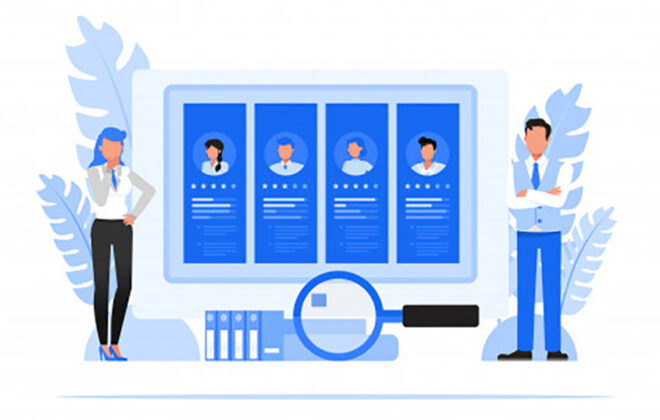Pride Month: 6 Ways You Can Build a Gender Inclusive Workplace
For the LGBTQ+ community, June is the month of celebration and pride. And for you, it is a nudge to peek inside and evaluate your stand in supporting the LGBTQ+ community.
Researches reveal that the last few years have substantially pushed the progress for LGBTQ+. Yet, more than half (57%) of LGBT+ employees believe their gender identity and expression, or their sexual orientation has slowed their progress at work. And shockingly, only 31% of LGBTQ+ employees are fully open about their gender identity or sexual orientation at work.
Figures further fall to 21% when it comes to leaders’ openness about their gender identity and sexual orientation at work. Stats reflect how difficult is it for the LGBTQ+ community to identify themselves in the workplace.
![]()
Startling as it seems, there are a breadth of steps an organization can take to address this problem. But forced solutions and action do not lead to cultural and mindset shift. You need to lay the foundation right and lead with an example to push the change. Below is a list of 6 such fundamental practices that will help you build a gender-inclusive workplace.
1. Educate, Educate and Educate
![]()
Yes, we can’t emphasize this enough. Majority of the population still can’t comprehend the existence of another gender other than male or female. And lack of education around gender identity further festers people’s understanding of stigma and prejudices.
Therefore, if you give paramount importance to diversity and inclusion, you must educate employees regularly about gender identities. Make it an integral part of your employee on-boarding training programs to set the expectations right at the time of joining.
Few of the information that you must cover during the training are,
- Existence of multiple genders and how they differ from one another
- How to treat every gender without being indifferent
- How gender diversity contributes to a team’s performance and why is it important
- Gender harassment implications and policies
2. Use Gender-Neutral Language on Company Documents
‘Diversity’ and ‘Inclusion’ are thrown around in the workplace often during onboarding, review meetings, and rewards and recognition ceremonies. But we often neglect the granular realities during implementation. As a result, you will find your company documents are filled with gender-biased words and sentences reflecting your subconscious bias. Incorporate a gender-neutral language to consciously address these biases.
- Instead of mentioning gender as “men” and “women”, write “people” in your documents. Replace “he/she” with “they”.
- Swap out “Man” words. For instance, use “Businessperson” in place of “Businessmen”, “Personnel” in place of “Manpower”.
- Add “LGBTQ+” as a sex option in company forms in addition to “Male” and “Female”
![]()
3. Enforce Gender Diversity Policy
Creating and implementing a strict gender diversity policy is imperative to build a gender-inclusive workplace. Especially when one-fifth (20%) of LGBTQ Americans have experienced discrimination based on sexual orientation or gender identity when applying for jobs.
In such scenarios, devising policies becomes the first step to safeguard the LGBTQ+ community’s rights. As of 2020, 93% of Fortune 500 companies have non-discrimination policies that include sexual orientation.
While drawing up policies, you must strictly and clearly outline the punishable behavior along with repercussions of violating it. Being clear and firm with what is unacceptable helps you avoid any future mishaps and prevents you from any undue advantage taken by offenders.
Read More: Why You Should Add Culture Fit in Your Diversity Hiring Plan
4. Offer Gender-Neutral Restrooms
Transgenders are most troubled while using any amenity that discreetly asks them to conform to a binary gender.
About one-fourth amongst the 90% of transgender facing discrimination were forced to use restrooms that did not match their gender identity.
If you are keen on strengthening your workplace diversity, you would need to be apprised of your workforce day to day activities and address basic issues like restrooms.
By providing gender-neutral restrooms, you create a safe space for the non-binary gender where they are not forced to identify themselves as male and female before availing access to basic amenities.
This simple step sends a clear message to the employees about your cognizance towards employee’s needs and vision to consciously provide an inclusive work environment.
5. Leverage Employee and HR Data to Modify LGBTQ+ Hiring Strategy
To build a gender-inclusive and diverse workplace, you need to hire more and more diverse employees. But before starting the hiring there are a series of questions that you must get answers to.
Start with understanding your current hiring pattern.
Is there any bias that is hindering you from hiring LGBTQ+ employees? Do you see gender dominance in departments? If yes, analyze what are they? Dig deeper into HR data to understand if in past LGBTQ+ candidates were not hired. What were the probable reasons that hindered their hiring?
Question the status quo. Dig deep into your hiring biases to formulate more gender-inclusive hiring strategies. Analyzing existing data to understand the current hiring patterns will help you build LGBTQ+ friendly recruitment processes and break you free from the inherent biases.
6. Build Safe Space for LGBTQ+ Employees
Building a safe space for the LGBTQ+ employees inside the organization should be more than stringent policies. For non-binary gender to feel safe, you must provide them a platform to voice their concerns, struggles, and suggestions without being wary of judgments.
Building in-house LGBTQ+ communities achieve this purpose. It provides them a platform to collectively communicate, creates awareness, and spread the message of positivity.
Fostering confidence and courage, these platforms make the non-binary gender feel safer and more inclusive. It provides them the right support to come out with their problems and raise their concerns which otherwise would have never been heard. Further, collective issues raised on these platforms also help organizations identify any biases that might taint the workplace.
Subscribe For Updates
Categories
- Accountant
- AI
- Automation
- Awards and Recognitions
- Blue Collar Staffing
- Burnouts
- Campus Recruiting
- Cloud
- Co-Ops agreements
- Company Culture
- Compliance
- contingent workforce
- Contingent Workforce
- COVID-19
- Cyber Security Staffing
- Data Strategy
- Digital Transformation
- direct sourcing
- Distributed Workforce
- Diversity
- Diversity & Inclusion
- Economy
- Events & Conferences
- fleet industry
- Gig Economy
- Girls in Tech
- Global Talent Research and Staffing
- Government
- Healthcare
- Healthcare Staffing
- Hiring Process
- Hiring Trends
- Home Helathcare
- HR
- HR Practices
- HR Tech
- IT
- Labor Shortages
- Life Science
- Local Governments
- News
- Nursing
- Payroll Staffing
- Public Sectors
- Recruiting
- Remote Work
- Skill Gap
- SMB Hiring
- Snowflake
- Staffing
- Staffing Augmentation
- Staffing Challenges
- Talent ROI
- Tech Staffing
- Technology
- Tips & tricks
- Total Talent Management
- UI/UX Design
- Uncategorized
- Veteran Staffing
- Veterans Hiring
- Veterans Hiring
- Workforce Management
Recent Posts
- Automation in Recruiting: From Chatbots to Predictive Screening
- Gig Economy Expansion: The Impact on Talent Pools and Business Models
- Skills-Based Hiring: Why Credentials Alone Don’t Cut It in 2025
- Procurement 3.0: AI & Intelligent Automation in 2025
- Q3 Is Here: Is Your Contingent Workforce Strategy Falling Behind?
Newsletter
Archive
- September 2025
- August 2025
- June 2025
- April 2025
- March 2025
- December 2024
- November 2024
- October 2024
- September 2024
- August 2024
- July 2024
- June 2024
- May 2024
- April 2024
- March 2024
- February 2024
- January 2024
- December 2023
- November 2023
- October 2023
- September 2023
- August 2023
- July 2023
- June 2023
- May 2023
- April 2023
- March 2023
- February 2023
- December 2022
- November 2022
- October 2022
- September 2022
- August 2022
- July 2022
- June 2022
- November 2021
- October 2021
- September 2021
- August 2021
- July 2021
- June 2021
- May 2021
- April 2021
- March 2021
- February 2021
- January 2021
- December 2020
- November 2020
- October 2020
- September 2020
- August 2020
- July 2020
- June 2020
- May 2020
- April 2020
- March 2020
- February 2020
- January 2020
- December 2019
- November 2019
- October 2019
- September 2019
- August 2019
- July 2019
- June 2019
- May 2019
- January 2019
- December 2018
- November 2018
- October 2018
- September 2018
- August 2018
- July 2018
- June 2018
- May 2018
- April 2018
- March 2018
- February 2018
- January 2018
- December 2017
- November 2017
- October 2017
- September 2017
- August 2017
- July 2017
- June 2017
- May 2017
- November 2016
- October 2016




